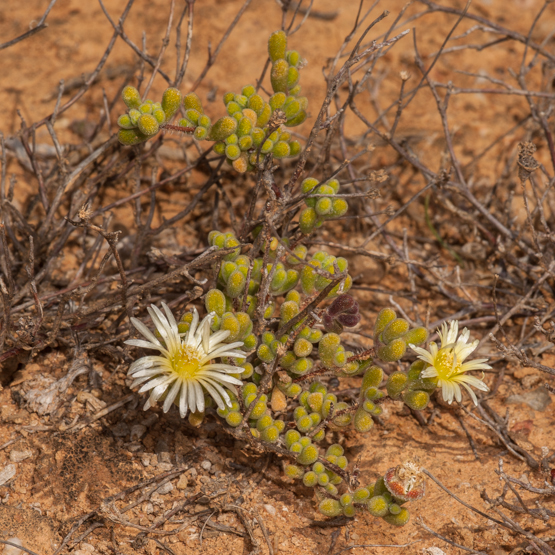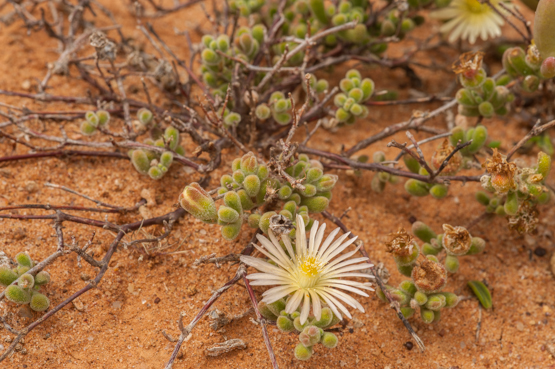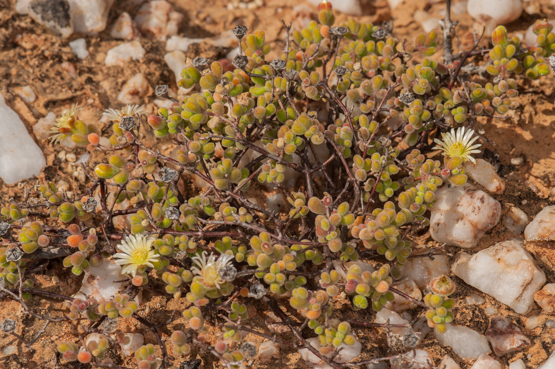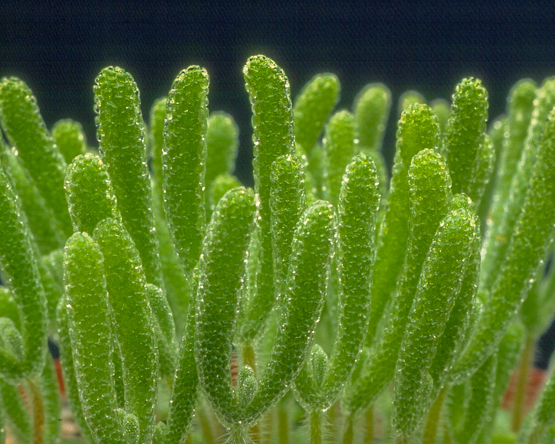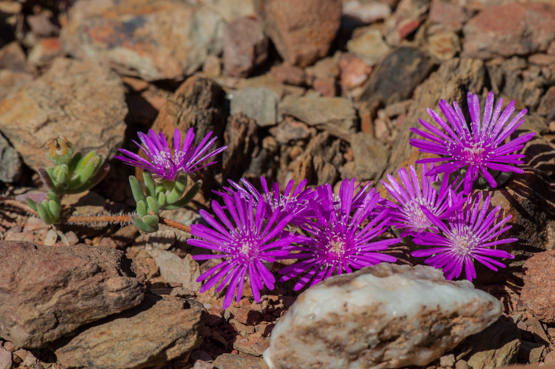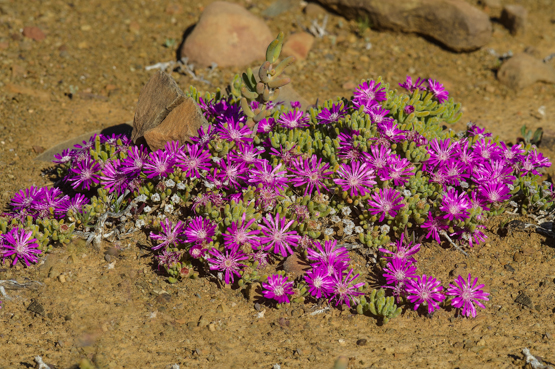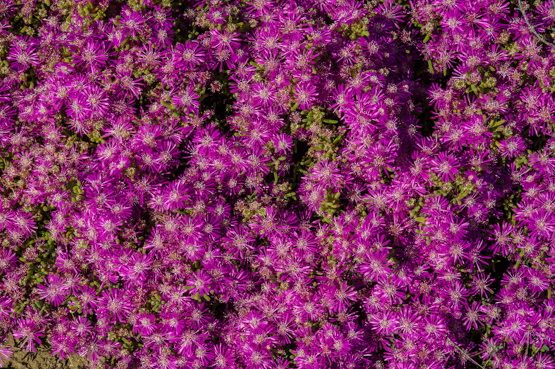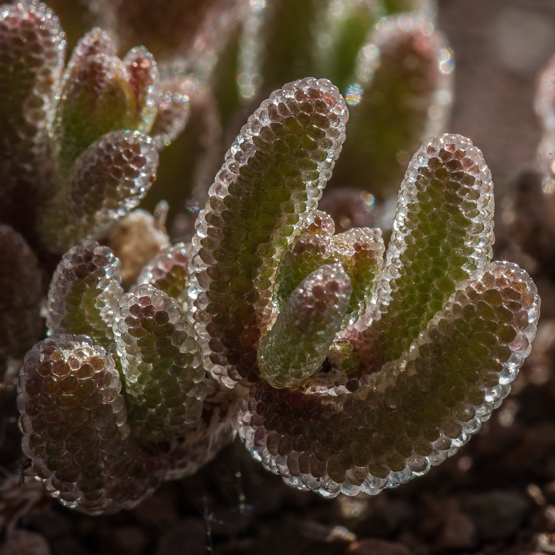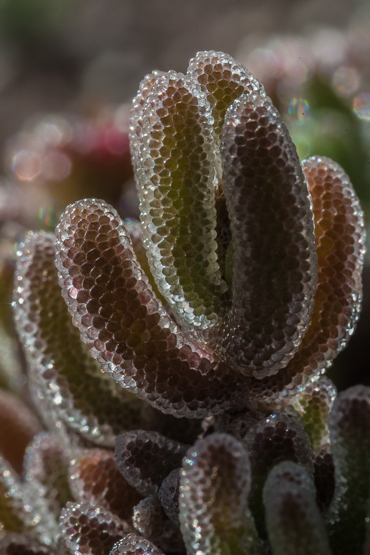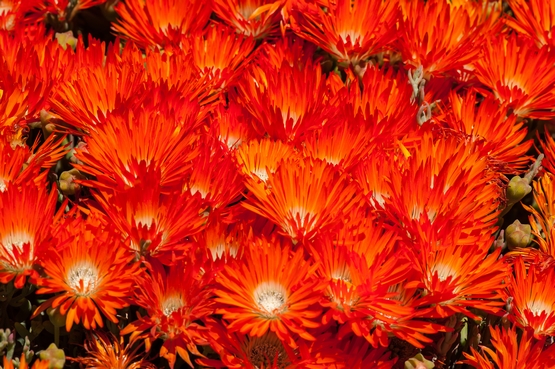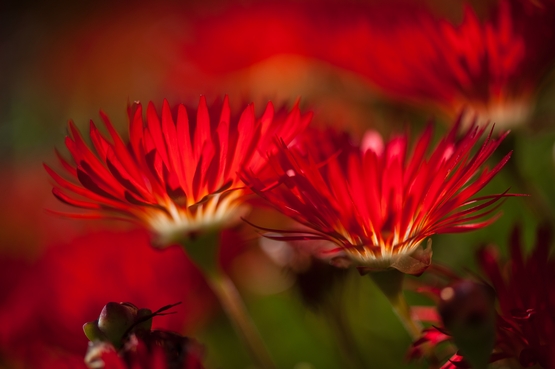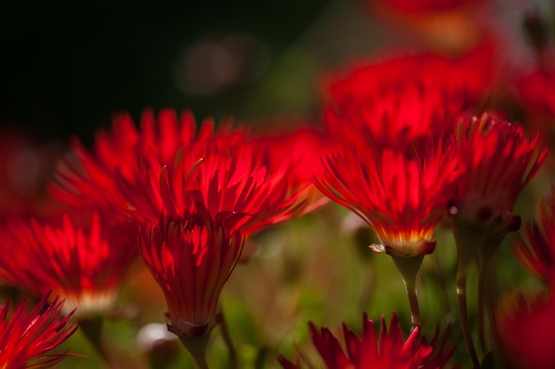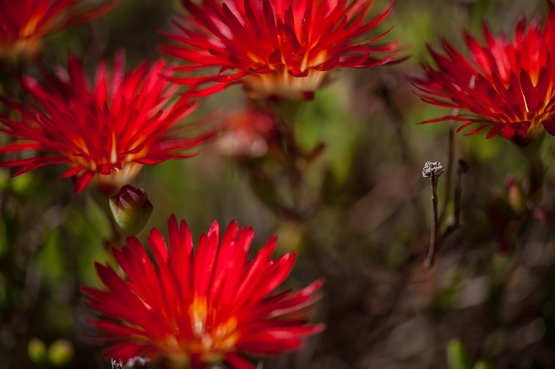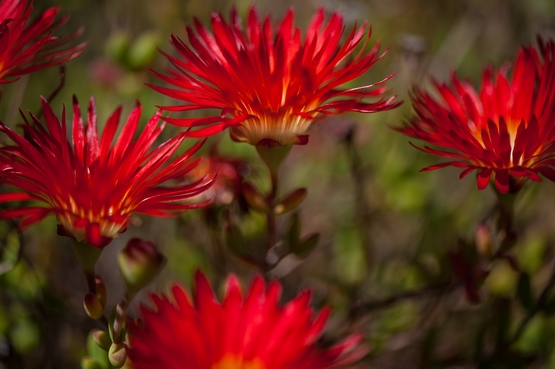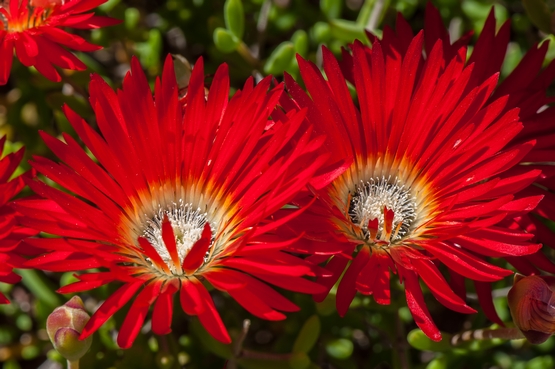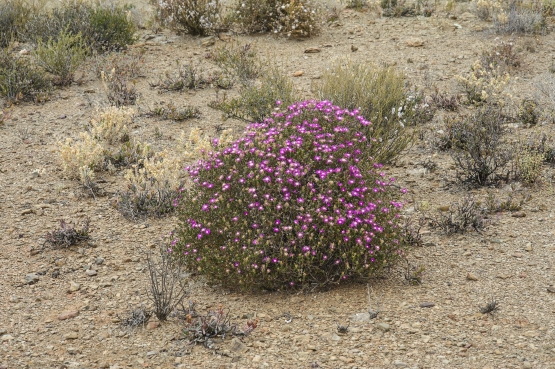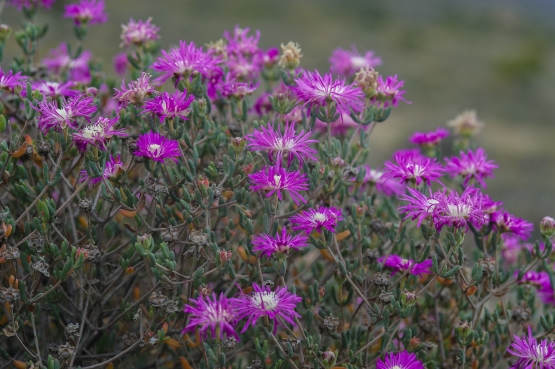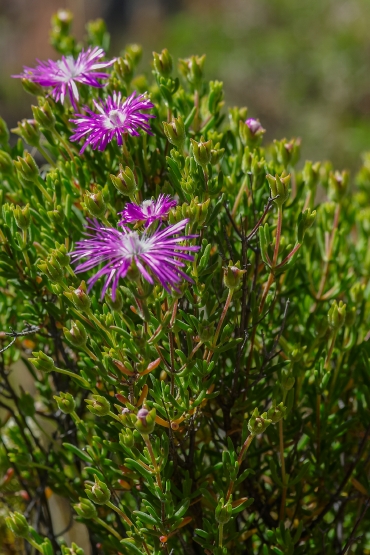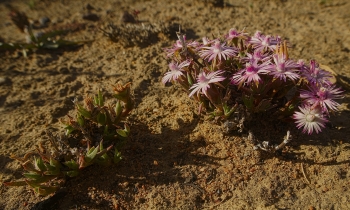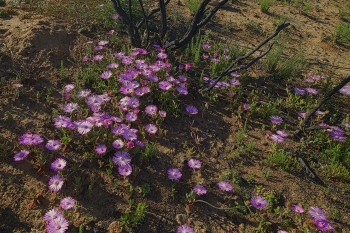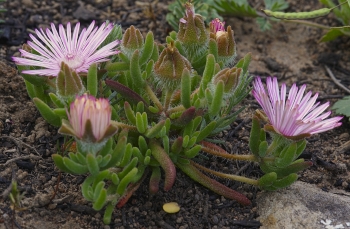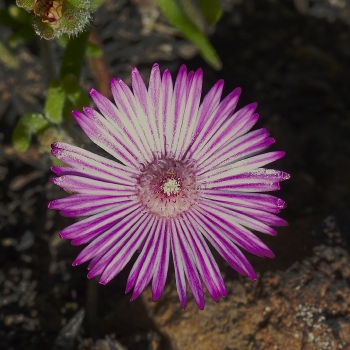“After three consecutive posts on one species, I will not mention it for a while now. Promise.”
I wrote this in October last year and the species I referred to was the same one as the subject of this post. After being silent on the topic for some ten months, I now have reason to bring it up again.
Last Sunday I visited “Vrolykheid Nature Reserve”, which is situated between Robertson and McGregor. The plant pictured here was only one of a couple of interesting finds this little known reserve proved to have in stock.
When I had a look at some plants of Drosanthemum speciosum with very dark scarlet flowers, I suddenly noticed one plant with exquisite silvery pink flowers. In all other respects it looked like a run-of-the-mill D.speciosum. Nevertheless I checked out all my available literature and found out that the flower colour is described as “red to orange” and” bright orange to crimson”.
The only book with a different opinion is “Vygies, gems of the veld” by Van Jaarsveld en De Villiers Pienaar. What they say is the following: “Flowers up to 50 mm in diameter, usually orange, flaming scarlet or red. There are however yellow, rose-pink and even pale pink or straw-coloured forms of the plant.”
There is a similar species with pink flowers growing near Ceres (D. bellum), but there the leaves are more or les cylindrical and recurved at the tip, whereas in D. speciosum the leaves are “semi-cylindrical or trigonous, incurved like horns”.



